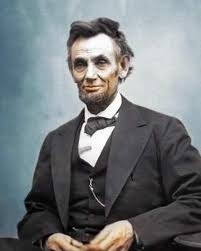Organizational Culture According to Business Dictionary:
“The values and behaviors that contribute to the unique social and psychological environment of an organization.
Organizational culture includes an organization’s expectations, experiences, philosophy, and values that hold it together, and is expressed in its self-image, inner workings, interactions with the outside world, and future expectations. It is based on shared attitudes, beliefs, customs, and written and unwritten rules that have been developed over time and are considered valid. Also called corporate culture, it’s shown in
(1) the ways the organization conducts its business, treats its employees, customers, and the wider community,
(2) the extent to which freedom is allowed in decision making, developing new ideas, and personal expression,
(3) how power and information flow through its hierarchy, and
(4) how committed employees are towards collective objectives.
It affects the organization’s productivity and performance, and provides guidelines on customer care and service, product quality and safety, attendance and punctuality, and concern for the environment. It also extends to production-methods, marketing and advertising practices, and to new product creation. Organizational culture is unique for every organization and one of the hardest things to change.”
As a leader you can’t delegate the culture building decisions. Leaders need to be great delegators, but not when it comes to organizational culture. Leaders own, create and shape culture.
Why having a solid culture in the organization is so important?
A) Culture is the glue that holds everyone together; it helps the retention. People don’t leave the company they leave the leader.
B) Culture is like the oxygen we breathe, we don’t know the real value of it unless we are lacking it.
C) Culture is as important as the vision for the organization, maybe even more important. “Culture can have the vision for lunch”…. We can’t achieve a big vision without a solid culture.
D) Culture creates collaboration, creativity (a dynamic, entrepreneurial, creative environment) , and competition.
E) Culture can create trust and communication within a company, it builds stronger teams and accountability.
In order to build a solid culture the leader should communicate his values, strategy, goals, and expectations frequently. Leader can’t just focus on the good; he should be upfront about the bad, too (transparency).
Remember changing an entrenched culture is the toughest task you will face. To do so I like to share few points that have worked for me:
1. Build Relationship: You must win the HEARTS and minds of the people you work with, and that takes both cunning and persuasion.
2. Communicate: People must have some understanding of WHY the change in strategy or in culture is needed. “People hear what they want to hear. Is your vision written down not only on paper but also on their hearts?”
3. Motivation: Ultimately, team members have to WANT to make the change.
4. Consistency: This is KEY to a successful change.
Sometimes you will get shot down before you stand up, that’s completely understandable. Remember, this is a process and not an event.
5. Create a Growth Environment: “Growth thrives in conducive surroundings”.
Communication changes the culture but GROWTH creates the healthy culture that you always wanted.
Live with passion!



